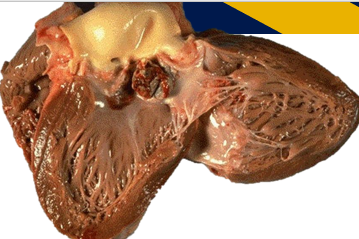Inflammation
Inflammation:
It is a physiological process that is expressed by our immune system and may convert to pathological conditions in the future based on the severity of the inflammation.
It is classified into Acute and chronic inflammation based on the components of the inflammatory process.
Inflammatory mediators:
These are the chemical compounds that initiate and maintain the inflammatory process.
1. Arachidonic acid metabolites:
Arachidonic acid is released from the cell membrane by phospholipase A2. Then it will react with cyclooxygenase or 5-lipoxygenase enzymes.
- Arachidonic acid with cyclooxygenase produces prostaglandins (PG), which mediate vasodilation.
- Arachidonic acid with 5-lipoxygenase produces leukotrienes (LT), which mediates vasoconstriction and bronchospasm.
2. Mast cells:
Mast cells are activated by any trauma and by complement proteins C3a and C5a.
Mast cells act 2 forms of response. Immediate and delayed response.
- Immediate responses produce histamine and mediate vasodilation.
- The delayed response involves Arachidonic acid metabolite, mostly LT.
3. Hageman factor ( Factor XII):
This factor cause inhibition of pro-inflammatory proteins in the liver.
Acute Inflammation:
This type of inflammation is characterized by edema and the presence of neutrophils in tissue. It is caused by the response of infection and necrosis.
There are 7 steps of the inflammatory process.
Step - 1:
Margination - vasodilation cause the cells to migrate from the center of the lumen to the periphery.
Step - 2:
Rolling - For the rolling of cells to reach the peripheral wall of the vessel, we have a special protein called selectin. There are 3 types of selectin involved in the inflammation process.
P - Selectin helps in the rolling of cellsE - Selectin helps in rolling and adhesion of cellsL - Selectin helps in location of T-cells in chronic inflammation.
These selectins bind sialyl lewis X (tetrasaccharide carbohydrate which is usually attached to O-glycans on the surface of cells) on the surface of the leukocytes, which results in rolling of leukocytes to reach the cell wall.
Step - 3:
Adhesion - Cell Adhesion Molecules and integrins help in the firm adhesion of leukocyte to the cell wall.
Step - 4:
Transmigration and chemotaxis - In this step, all the leukocytes leave across the endothelial and move toward the bacterial product, IL-8, C5a, and LTB4, which is called the chemo-attractant.
Step - 5:
Phagocytosis - It is the consumption of pathogens or death tissues mediates by a protein substance called opsonin.
The pathogens get engulf by macrophages called phagosomes. When the enzyme called lysosome is a synthesis from Phagosomes called Phagolysosome.
Step - 6:
Destruction of phagocytosed material - All the phagocytosed materials undergo destruction in 2 forms of process.
- Oxygen dependent killing- Oxygen independent killing
Oxygen-dependent - Hypochlorous acid (HOCl) produced from the phagolysosomes, destroys the phagocytosed microbes.
Oxygen independent - less effective when compared with O2 dependent killing. It is done by enzymes like lysosome in macrophages.
Step - 7:
Resolution - Neutrophils undergo apoptosis and vanish within a day after the resolution of inflammation.
Chronic inflammation:
It is differentiated from acute inflammation by the presence of lymphocyte and plasma cells in the tissue. Chronic inflammation is a delayed-type of response. It may be caused due to the heavy viral, mycobacterial, parasite or fungal infections. Mostly this type of infection is caused due to persistent infection.
The process of inflammation in the chronic conditions is associated with T cell and B cell function. So in order to understand the complete process of chronic inflammation, we have to go through cell-mediated immunity and humoral immunity mechanism along with the 7 steps of inflammation. I will update these processes later in brief.
Classification of Chronic inflammation:
They are 2 forms of chronic inflammation based on the nature of the inflammation.
1. Specific chronic inflammation2. Non specific chronic inflammation
Specific inflammation:
It is characterized by granuloma of epithelioid histocytes, giant cells, and lymphocytes.
It is divided into Noncaseating granuloma and Caseating granuloma.
Noncaseating granuloma lacks central necrosis mostly due to beryllium exposure, Crohn disease, and cat-scratch disease.
Caseating granuloma exhibits central necrosis mostly due to TB and fungal infection.
Non-specific inflammation:
It is the accumulation of macrophages and lymphocyte, usually produce fibrous tissue in injury.









Comments
Post a Comment